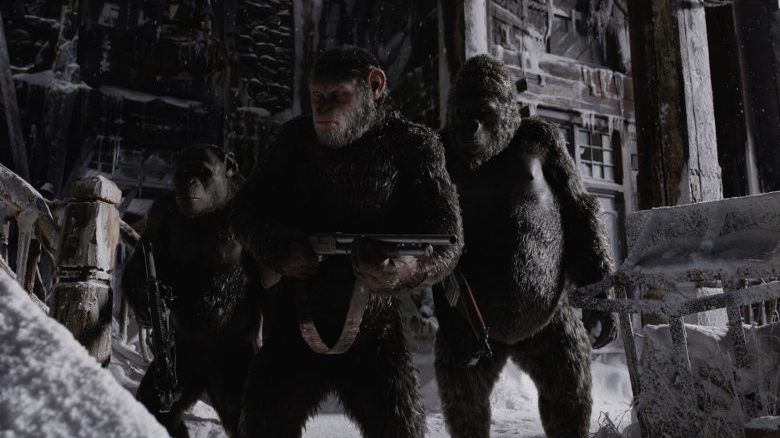
War for the Planet of the Apes, the latest film in the Planet of the Apes franchise, is now playing in theaters nationwide. When selecting your showtime this weekend, you’ll be met with the choice of seeing the film in 2D or shelling out a few extra dollars and seeing it in 3D. So which is the best choice in this case? How is the 3D in War for the Planet of the Apes?
War for the Planet of the Apes is another one of those movies in which the 3D has very little impact on the viewing experience. Matt Reeves does not really utilize 3D for any particularly dazzling shots or sequences, and there really is not a standout 3D moment in the film outside of one or two scenes where someone is holding an object that sticks out of the frame slightly. If you are a huge fan of 3D in general, then, it might be worth seeing War for the Planet of the Apes in this format, but for everyone else, 2D will do just fine.
In general, movies where the 3D is most impressive are the ones that are actually filmed in 3D. Other movies are filmed in 2D but converted to 3D in post-production. According to Slashfilm, War for the Planet of the Apes was converted to 3D in post, but it was shot in 2D.
That’s not abnormal, and in fact quite a few of the biggest movies that have been released this summer were converted to 3D in post-production, including Guardians of the Galaxy Vol. 2, Wonder Woman, Pirates of the Caribbean: Dead Men Tell No Tales, and Spider-Man: Homecoming. Transformers: The Last Knight, on the other hand, was shot primarily with IMAX 3D cameras, and so while that movie generally received poor reviews, the 3D in it earned pretty widespread praise.
After James Cameron’s Avatar became a smash hit at the box office in 2009, film studios began to convert many of their upcoming films into 3D in order to take advantage of these higher ticket prices. Some of the subsequent movies released in 2010 that were never planned for 3D but that were converted to 3D in post-production, such as Clash of the Titans, looked pretty horrible, with parts of the frame being far dimmer than the director intended.
Seven years later, post-production 3D is usually at least passable, and rarely will it actively detract from your viewing experience. These days, it’s just a matter of whether the extra ticket price is worth it, although sometimes audiences will wind up choosing 3D just because the showtime is more convenient than the 2D showtime. If that’s the case with War for the Planet of the Apes, seeing the film in 3D is certainly a fine choice that you won’t be upset about; it’s just that the 3D will not stand out, and a day or two later, you might completely forget that you didn’t see it in 2D.
If you are to see War for the Planet of the Apes in a premium format, it should be IMAX. After all, the film was shot on 65mm. The standard film is shot on 35mm, but 65mm provides a much higher resolution and a larger picture, which is especially useful during outdoor sequences where viewers can get a sense of the size and scale of the exteriors. These movies tend to look absolutely gorgeous when projected in IMAX, a format in which the full size of the picture can be displayed, and so the ideal premium format to see War for the Planet of the Apes in would be IMAX, either IMAX 2D or IMAX 3D.
Comments
‘War for the Planet of the Apes’: Is the 3D Worth It?